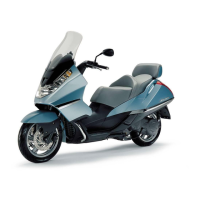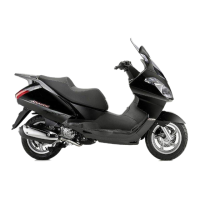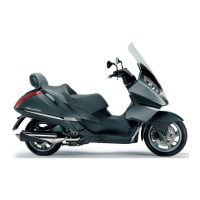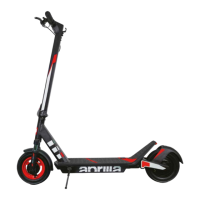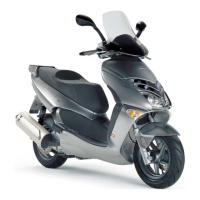TLANTIC 125 - 200
8.12. REPLACING THE FUSES
8.12.1. REPLACING THE FUSES
WARNING
Never attempt to repair a defective fuse.
Never use a fuse of a rating other than
specified.
This could damage the electrical system or
cause a short circuit, with the risk of fire.
NOTE When the fuses fitted in a particular position keep
blowing frequently, there might be a short circuit or
overloading.
Checking the fuses is recommended whenever an electrical
component fails to operate or is malfunctioning, or when the
engine does not start.
Check the 3-A and 15-A fuses first and then the 30-A fuses.
• Set the ignition switch to “
”. This will prevent
accidental short circuits.
Main fuses:
• Perform the first four steps described at paragraph
2.4.3.
Auxiliary fuses:
• Remove the front cover,
7.1.10.
Inspection:
• Extract all fuses one by one and check for blown fuses.
A blown fuse is identified by the link bar in the centre
being divided.
• When you find a blown fuse, determine and rectify the
cause (if possible) before fitting a new fuse.
• Replace any failed fuse with a fuse of equal current
rating.
NOTE When you use one of the spare fuses, remember to
add a new fuse of equal rating to the fuse box.
Layout of auxiliary fuses (front cover):
- 15-A fuse (1)
From ignition switch to: lights, horn, brake lights.
- 7.5-A fuse (2)
From ignition switch to: starting interlock relay, automatic
starter.
- 7.5-A fuse (3)
Spare.
- 15-A fuse (4)
Spare.
Layout of main fuses (battery compartment):
- 20-A fuse (5)
From battery to: ignition switch, helmet compartment light.
- 15-A fuse (6)
From battery to: power socket.
- 15-A fuse (7)
Spare.

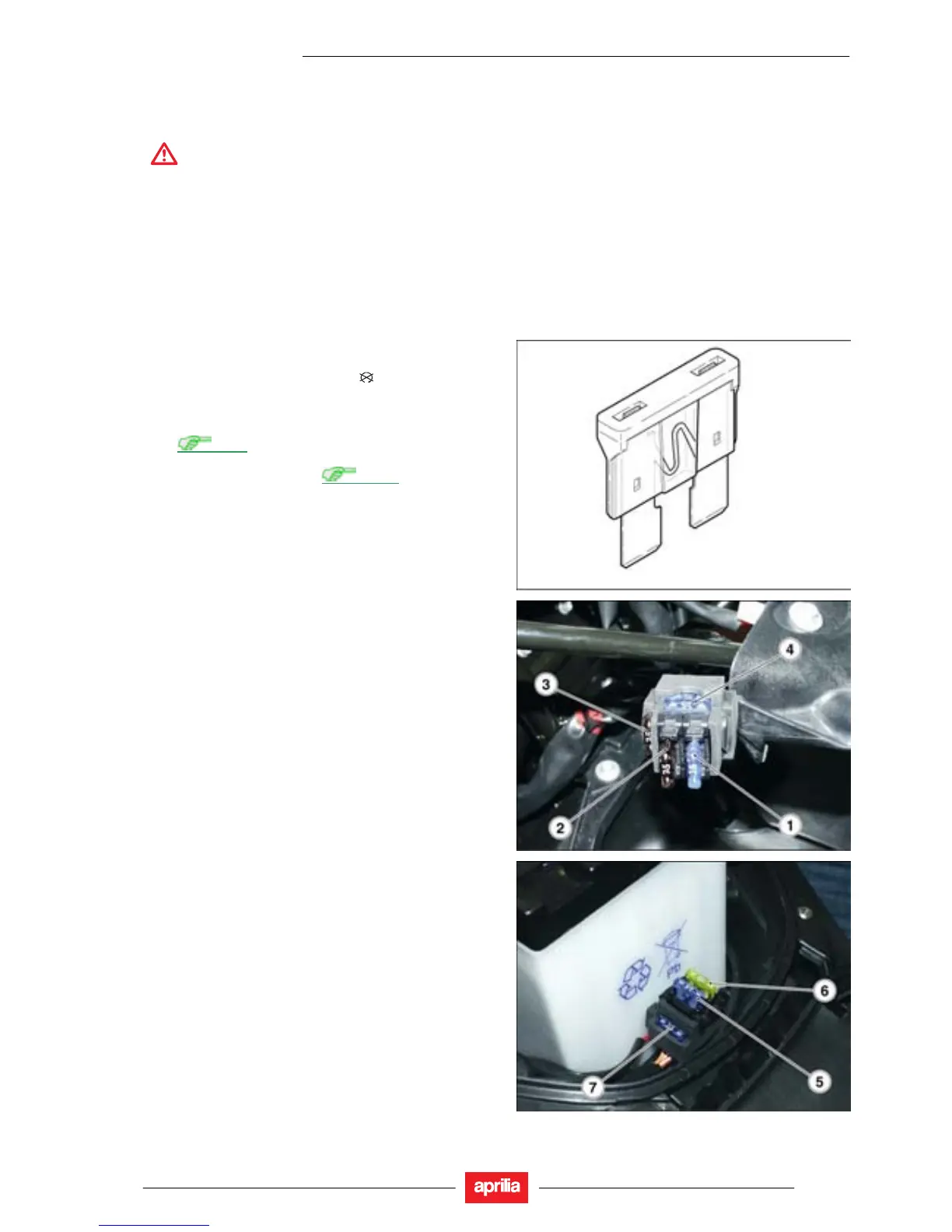